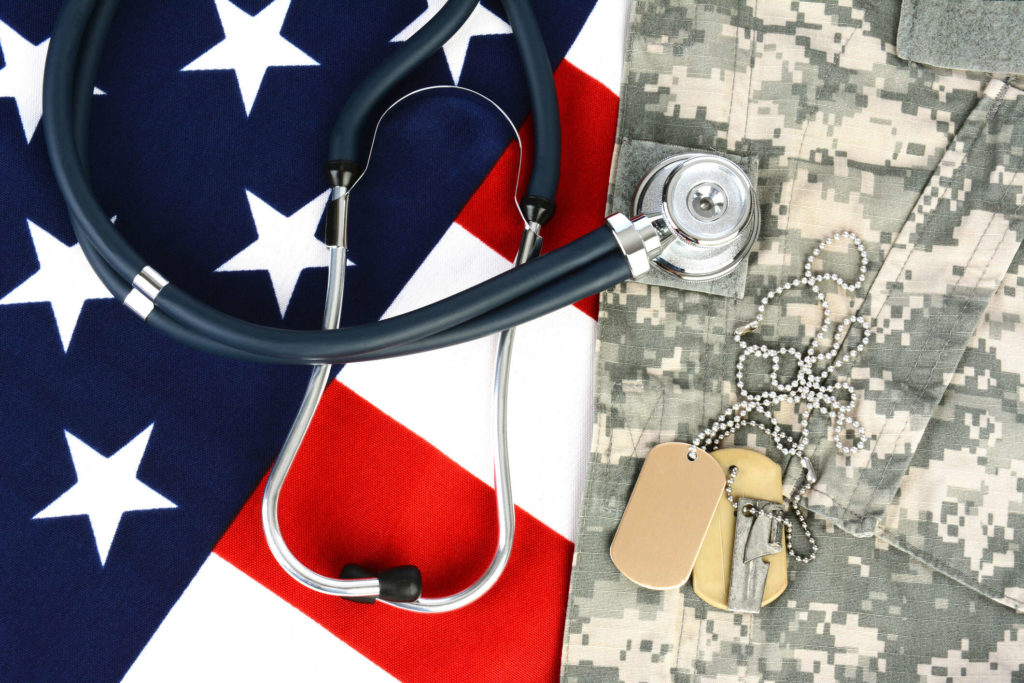
After a tumultuous year of pauses and reconsiderations, military hospitals and clinics are still on track to move under the management of the Defense Health Agency by the end of the year.
How that will effect patients of those facilities may change from the original plan though, after the military’s centralized medical administrator was forced to rethink what role private healthcare providers can play in the plan after COVID-19.
“We are absolutely on track to meet our timelines and that’s our expectation with us,” Dr. Brian Lein, DHA assistant director for healthcare administration told Federal News Network.
The transition includes 721 MTFs and 174,000 healthcare personnel including active-duty service members, civilian employees and contractors, which provide care to 9.5 million TRICARE beneficiaries. The facilities are clustered into 21 large markets that encompass about two-thirds of patient interactions. The rest are in 16 small market regions or stand-alone hospitals and clinics (think rural areas with a large military presence).
Congress initiated the transition in the 2017 defense authorization bill as a means to better integrate healthcare instead of continuing the decentralized system of each military service overseeing its own MTFs.
As part of that transition, DHA planned on “rightsizing” its markets to increase readiness.
“What we found in our review is that many of these facilities do not have the type of patient case load, volume, acuity that we need for our providers to be proficient in what they do downrange,” Thomas McCaffery said in early 2020 when he was the assistant secretary of Defense for Health Affairs. “And so by limiting the scope of services, that will allow us to take some of those providers and place them at other MTFs that do have that direct match for their readiness requirements.”
The plan would have closed about 50 MTFs and moved approximately 200,000 patients from getting care on base to using their TRICARE insurance to get assistance from private providers.
Even before coronavirus there was skepticism around whether those 200,000 would have the access to care they needed, however the pandemic exacerbated the issue.
“The markets in some of the areas changed significantly, just like you saw in the newspaper and elsewhere, a lot of providers closed up their doors, and a lot of access went away,” Lein said. “The United States lost a lot of hospitals, and hospital capability, especially in some smaller communities, where it couldn’t support those hospitals in terms of finances.”
DHA is now in the process of reconsidering it rightsizing plan and taking into account the changing medical communities. Lien said DHA has not yet come up with a number of how many patients will be offloaded from MTFs and how many MTFs will close.
“Were the assumptions and the facts that we found in 2017 still true? Do the communities still have the capability to take care of our people? Do the communities downsize? Do the communities get bigger, but their hospitals didn’t get bigger? We’re working through all of that right now,” Lein said. “COVID taught us a tremendous amount. It also really energized and developed a lot of synergies between our local MTFs and the markets. Every day in many of our markets, they were having conversations with the leaders of the civilian healthcare organizations, about bed status, about treatment capabilities, ICU status and emergency room status.”
In the beginning of the pandemic the Government Accountability Office released a report stating that DHA’s original assessment of the civilian marketplaces did not consistently account for provider quality and that inaccurate information was used to calculate how far patients would have to drive to get healthcare.
“MTF officials we interviewed also expressed concerns that the assessments did not account for traffic, including bridges and tunnels that create traffic chokepoints. In other words, they believed that even providers that appeared to be within drive time standards based on mileage could actually exceed the standard depending on their location and time of day,” the report stated.
Last August, the military service chiefs called for a halt in the transition.
“The DHA end-state, as designed, introduces barriers, creates unnecessary complexity and increases inefficiencies and cost,” the military officials wrote. “Service command and control of the MTFs as military units, through our direct support, was critical to commanders’ operational response [to coronavirus] and swiftly adjusting resources across the enterprise.”
DHA halted its transition and worked with the service chiefs. Congress told the services in the 2021 National Defense Authorization Act that the show must go on.
“The conferees restate that DOD must continue on the path required by law to eliminate the inefficient, stove-piped Military Health Service structure that inevitably leads to turf wars among the services and the DHA, while simultaneously paralyzing decision-making and stifling healthcare innovation,” lawmakers wrote.
Congress did allow military services to hold on to their medical research arms a little longer, however those much fully transition to DHA by 2025 under the 2021 NDAA.
